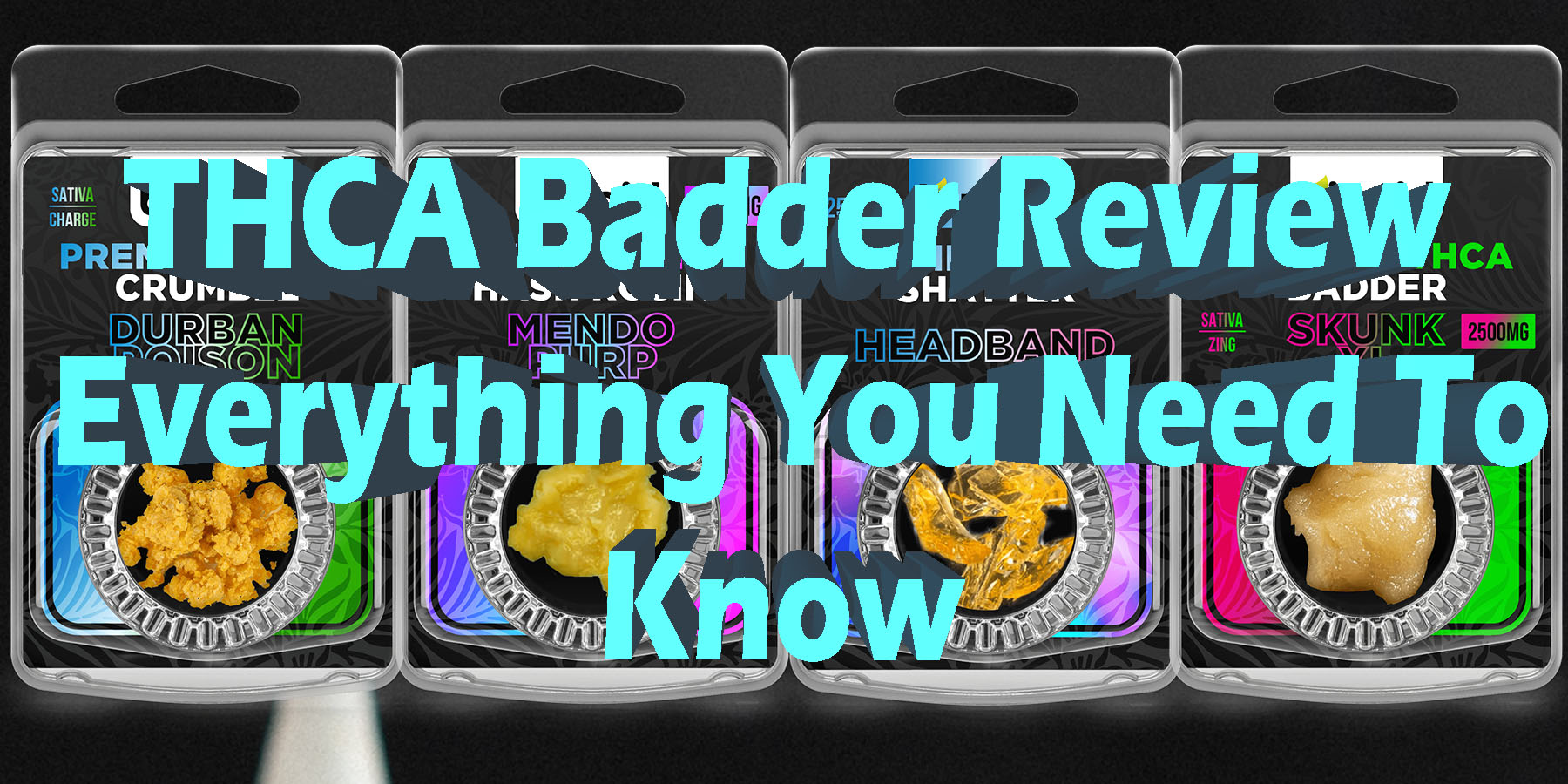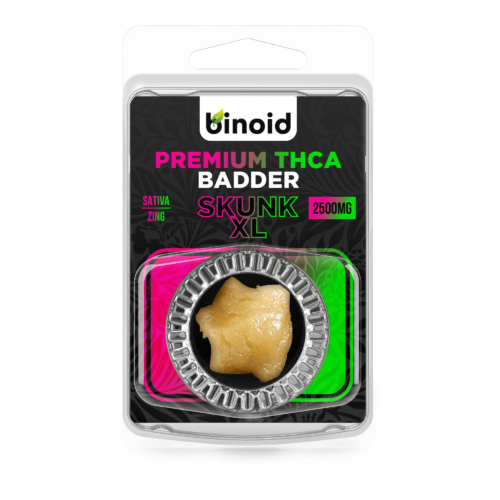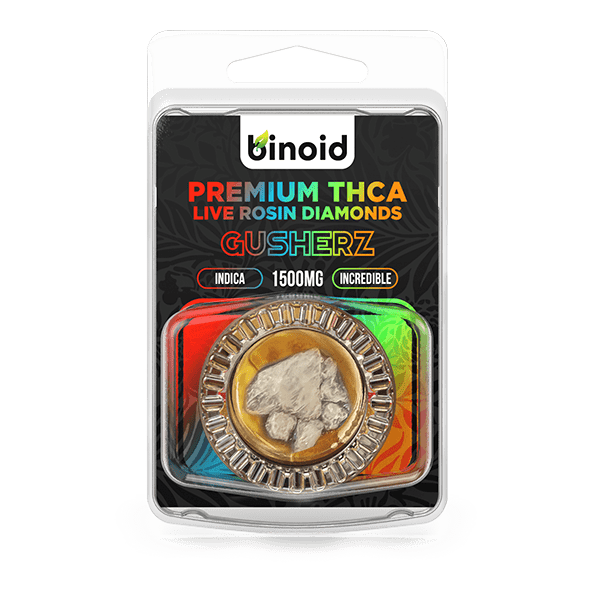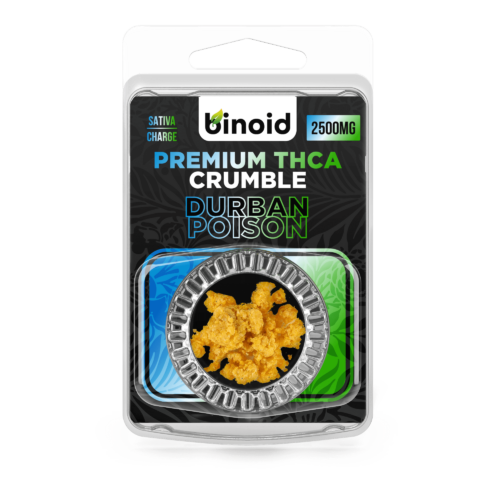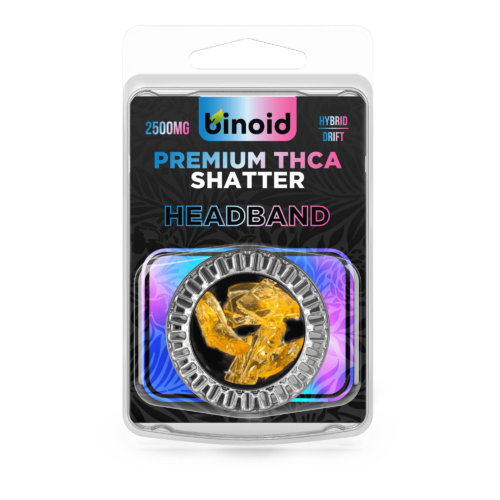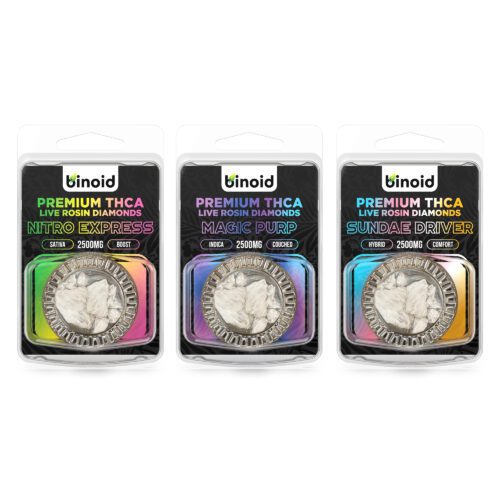In the ever-evolving gallery of cannabis concentrates, texture is king. While some connoisseurs are drawn to the crystalline purity of diamonds or the brittle, glass-like nature of shatter, many find themselves captivated by a consistency that is lusciously smooth, supremely flavorful, and incredibly easy to work with. Enter the world of badder.
With a texture reminiscent of soft cake batter or thick frosting, this form of concentrate has surged in popularity, offering a perfect marriage of potent effects and rich, sensory delight. When this beloved consistency is centered around the raw power of THCA, the result is a product that commands attention. THCA badder is more than just an extract; it’s a creamy, aromatic journey into the heart of the cannabis plant’s potential, promising a clean, blissful experience that is as enjoyable to handle as it is to consume.
To Buy THCA Products Click Here
Recommended products
Your Key Insights into THCA
To fully appreciate the creamy excellence of badder, one must first understand its foundational component: Tetrahydrocannabinolic acid (THCA) – that non-psychoactive precursor to THC, synthesized naturally within the trichomes of raw and uncured cannabis plants. In its innate state, THCA is the dominant cannabinoid, representing the plant’s stored potential. It is a molecule with a unique three-dimensional structure, including a carboxylic acid group that prevents it from binding effectively with the brain’s CB1 receptors. This structural difference is why consuming raw cannabis does not produce the euphoric “high” that the plant is famous for. Instead, THCA exists as a latent force, a chemical promise waiting for a catalyst to unlock its celebrated effects.
The scientific journey to understand THCA is a pivotal chapter in the history of cannabis research. For thousands of years, humanity utilized the cannabis plant without grasping the precise mechanisms behind its effects. This began to change in the mid-20th Century, as advancements in analytical chemistry allowed scientists to peer into the plant’s molecular makeup. Following the landmark isolation and synthesis of Delta-9 THC in 1964 by Dr. Raphael Mechoulam and his team in Israel, researchers soon identified its acidic parent, THCA, in 1965. This discovery was monumental, as it revealed the biosynthetic process within the plant. Scientists finally understood that THC was not the primary product of the plant’s growth, but rather the result of THCA losing its acid group through a process called decarboxylation, fundamentally changing our approach to consumption and extraction.
THCA’s effects are entirely dependent on its transformation. In its raw, unheated form, it remains non-psychoactive. However, when heat is introduced, a simple yet profound chemical reaction occurs. The heat removes the carboxyl acid ring from the THCA molecule, instantly converting it into the psychoactive powerhouse, Delta-9 THC. This is the very process that occurs when cannabis is smoked, vaporized, or dabbed. It is this conversion that unleashes the cascade of effects that users seek—a sense of profound bliss, heightened sensory perception, and waves of euphoria. The experience derived from converted THCA is often praised for its exceptional purity and clarity, providing an avenue for enhanced focus and creative flow that is both potent and invigorating, free from the heavy sedation that some other cannabis products might impart.
This unique chemical property, combined with a shifting legal landscape, has catapulted THCA products to the forefront of the modern cannabis market. The 2018 Farm Bill established the federal legality of hemp, defining it as any cannabis plant containing 0.3% or less of Delta-9 THC by dry weight. Because THCA is chemically distinct from Delta-9 THC, cannabis flower and concentrates with high THCA levels fall within this legal framework, making them accessible to a nationwide audience. This legal nuance has fueled a surge in demand from consumers who want an authentic, potent cannabis experience that is compliant and reliable. As a result, THCA has become a symbol of both purity and popularity, representing the bridge between the raw, natural plant and its most sought-after effects.
What is THCA Badder Then?
Now, let’s whip our attention to the star of the show: THCA badder – a concentrate that’s defined by its uniquely soft, creamy, and malleable consistency, which closely resembles that of thick cake batter or frosting—which is why it’s also frequently spelled “batter”. Unlike harder concentrates like shatter or drier ones like crumble, badder is a moisture-rich, oily extract that is exceptionally easy to scoop and manipulate. This desirable texture is not an accident, but the specific outcome of a carefully controlled post-extraction technique designed to create a stable emulsion of cannabinoids, terpenes, and other plant compounds. For concentrate enthusiasts, THCA badder is the epitome of flavor and convenience, offering a potent, terpene-forward experience in a format that is an absolute pleasure to work with, especially for dabbing.
The history of badder, much like that of other BHO (Butane Hash Oil) consistencies, is not a tale of a single inventor but rather one of collective, grassroots innovation. It emerged from the ever-experimental community of extract artists in the early 2010s who were pushing the boundaries of what was possible with solvent-based extracts. As they refined their purging techniques, they discovered that different methods of agitation could radically alter the final texture of the concentrate. The creation of badder was a direct result of trying to find the perfect sweet spot between a stable, flavorful wax and a wet, terpy sauce. By whipping the extract at a specific, often low, temperature, artists found they could introduce and trap air and moisture, creating a uniform, creamy suspension of cannabinoids and terpenes that was both stable and intensely aromatic.
The process of creating premium THCA badder is an art form that blends botanical science with culinary technique. The journey begins with high-quality cannabis plant material, rich in THCA and terpenes. This material is blasted with a solvent, typically butane, which strips the trichomes from the plant, dissolving the cannabinoids and terpenes into a potent oleoresin. This raw extract is then gently purged of residual solvent in a vacuum oven. The key step that defines badder comes next: the whipping. The partially purged oil is transferred to a container and is vigorously and continuously agitated, often over a low-heat source. This whipping process emulsifies the mixture, evenly distributing the terpenes and cannabinoids and creating the signature opaque, smooth, and batter-like consistency that gives the concentrate its name.
The resulting THCA badder is prized for a distinct set of characteristics. Its texture is paramount—a soft, creamy, and buttery consistency that is not sticky or difficult to handle, making it incredibly simple to dose and apply to a dab nail or into a vaporizer chamber. Its color is typically a beautiful light yellow or a rich golden hue, though the exact shade can vary depending on the starting strain, the specific extraction process used, and how it has been stored. Most importantly, its THC content is formidable. After decarboxylation, THCA badder delivers a potent punch, with concentrations often ranging from 70% to over 90% total THC, ensuring a powerful and fast-acting experience. This combination of user-friendliness, aesthetic appeal, and high potency makes it a clear favorite.
So, who is the ideal consumer for THCA badder? This concentrate is a dream come true for the “flavor chaser” or “terp head”—the user who prioritizes a rich and robust sensory experience above all else. Its production method is designed to preserve the maximum amount of volatile terpenes, resulting in an intensely aromatic and flavorful product. It is also perfect for dabbers of all experience levels, as its soft texture makes it arguably the easiest concentrate to handle and dose accurately. Whether you’re a seasoned veteran looking for the most flavorful dabs possible or a relative newcomer to concentrates seeking a user-friendly starting point, THCA badder’s combination of potent bliss, incredible flavor, and effortless handling makes it an exceptional choice.
Recommended products
Strain-Specific THCA Badder (with Terpenes) vs. Terpene-Free THCA Badder
When exploring the world of THCA badder, consumers are presented with a crucial distinction that dramatically shapes the final experience: the inclusion or exclusion of a rich terpene profile. This fork in the road leads to two primary categories of badder. On one side, you have strain-specific badder, which is meticulously crafted to preserve and showcase the natural aromatic compounds of the original cannabis plant. On the other side is terpene-free badder, a highly refined product that isolates the THCA molecule for an experience centered purely on potency and neutrality. Your choice between these two styles will ultimately depend on whether you seek a holistic, flavorful journey or a clean, customizable, and powerfully direct effect.
Strain-Specific THCA Badder (with Terpenes)
This form of THCA badder is a true celebration of the cannabis plant’s natural complexity and aromatic diversity. During its production, great care is taken to retain the delicate terpenes found within the source material. Terpenes are the fragrant organic compounds that give each cannabis strain its unique signature scent and flavor—from the earthy musk of Myrcene to the sharp citrus of Limonene or the fresh pine of Pinene. By preserving these compounds, strain-specific badder delivers a robust and complex flavor profile that is a genuine reflection of its genetic heritage. This leads to a more holistic experience where the aromatic qualities are just as important as the effects, often referred to as the “entourage effect”, where cannabinoids and terpenes work in synergy to create a more nuanced outcome.
To achieve this high level of preservation, producers often employ extraction methods specifically designed to be gentle on terpenes. Live resin extraction is a very popular method for creating high-quality badder. This technique involves flash-freezing the cannabis plant immediately at the point of harvest, capturing the terpene profile at its absolute peak freshness. The extraction is then carried out at very low temperatures to prevent these volatile compounds from degrading. The resulting live resin is then whipped into a badder consistency. This process ensures the final product is bursting with a vibrant, “live” spectrum of terpenes, offering a taste and aroma that is as close as possible to dabbing the living plant itself, providing an incredibly fresh and authentic sensory experience.
This synergistic relationship between cannabinoids and a rich terpene profile is believed to enhance and modulate the overall effects, making the distinction between Indica, Sativa, and Hybrid strains particularly meaningful. A THCA badder derived from a potent Indica strain, for example, is likely to contain terpenes that amplify the deeply blissful and serene qualities associated with that lineage. In contrast, a Sativa-based badder, rich in uplifting terpenes, can elevate the experience of focus, clarity, and creative euphoria. Hybrid badders offer the best of both worlds, presenting a balanced and multifaceted effect profile that can be fine-tuned depending on the specific genetics of the strain, allowing users to precisely select a badder that matches their desired mood or activity.
Even with its heavy focus on flavor, strain-specific THCA badder does not compromise on potency. These flavorful concentrates regularly feature exceptionally high levels of THCA, with lab tests often showing concentrations ranging from 80% up to 95%. When this potent badder is heated, the THCA rapidly converts to THC, delivering a powerful and immediate psychoactive experience that is beautifully colored by its complex terpene profile. This combination of immense power and sophisticated flavor creates a truly top-shelf experience. It’s a multi-sensory journey that satisfies the palate while providing the profound sense of bliss and well-being that discerning users demand from a premium concentrate.
Pros & Cons
Strain-specific THCA badder provides a rich, full-bodied experience, but it’s valuable to consider its unique strengths and potential limitations.
Pros:
Exceptional Flavor and Aroma: Delivers the authentic, complex taste of the source cannabis strain for a superior sensory experience.
Full-Spectrum Effects: The presence of a complete terpene profile may contribute to a more nuanced, well-rounded “entourage effect.”
Strain-Specific Experiences: Allows users to choose a badder based on the known effects of Indica, Sativa, or Hybrid genetics.
High Potency: Maintains a very high THCA concentration, ensuring powerful and effective results.
Aesthetically Pleasing: The rich color and creamy texture make it an enjoyable product to handle and consume.
Cons:
Predetermined Profile: Users are limited to the specific flavor and effect profile of the available strain.
Higher Cost: Production methods like live resin extraction can be more expensive, often resulting in a higher price point.
Recommended products
Terpene-Free THCA Badder
For the user who prioritizes purity and potency above all else, terpene-free THCA badder is the ultimate choice. This version of the concentrate undergoes a rigorous refinement process designed to remove as many non-THCA compounds as possible, including the vast majority of terpenes, flavonoids, and other plant waxes. The primary goal is to isolate and concentrate the THCA molecule to its highest possible purity while still maintaining a recognizable badder-like consistency. The resulting product is a testament to extraction science, offering a clean, powerful, and unadulterated cannabinoid experience for the veritable purist.
The experience of consuming terpene-free badder is uniquely direct. With the aromatic and flavorful terpenes stripped away, users can expect a clean, neutral, and almost flavorless vapor. The focus shifts entirely from the sensory aspects of taste and smell to the pure, uncolored effects of the THC it converts into. This makes it an ideal choice for users who may not enjoy the intense flavors of cannabis or for those who want a “blank canvas” experience. It provides a straightforward path to the desired states of euphoria, clarity, and bliss without the modulating influence of a complex terpene profile, offering a potent and direct journey.
While strain-specific badders often reach higher peaks of potency, terpene-free versions are still incredibly strong and effective. These products generally test with a THCA content ranging from 60%-80%. While this percentage might seem lower than some other concentrates, it represents an extremely high concentration of the target cannabinoid, delivering a very strong effect upon decarboxylation. This makes it a highly efficient option for achieving a powerful psychoactive experience. The focus here is not on the absolute highest number but on the purity of the effect, providing a clean and potent lift that is reliable and consistent every single time.
The creation of terpene-free badder often involves different production philosophies than its flavorful counterpart. Instead of methods designed to preserve terpenes, the process may involve isolation techniques or multi-stage distillation processes that prioritize the separation and purification of THCA. In some cases, a highly refined THCA isolate or distillate may be used as the base, which is then mechanically agitated or formulated with specific lipids to create a stable, creamy badder texture. This manufacturing approach underscores the product’s core identity: it is an engineered concentrate designed to deliver maximum cannabinoid purity in a familiar, user-friendly format.
Pros & Cons
Terpene-free THCA badder offers a uniquely pure and customizable experience, and it’s helpful to weigh its advantages and disadvantages.
Pros:
High Purity: Offers a very clean experience by removing most other plant compounds.
Neutral Flavor: Ideal for users who dislike the taste of terpenes or want a non-flavored additive.
Customizable: Can be used as a potent base to which users can add their own terpenes of choice.
Direct Effects: Provides the unadulterated effects of THC without the influence of a terpene profile.
Potent and Efficient: Delivers a strong dose of THCA for a powerful experience.
Cons:
Lacks the “Entourage Effect”: The absence of terpenes means you miss out on the potential synergistic benefits.
Less Sensory Appeal: The experience lacks the enjoyable flavor and aroma that many users cherish.
Recommended products
How Many Grams of THCA Badder Can You Find?
Navigating the market for THCA badder, you’ll discover a welcome variety of packaging sizes designed to accommodate every type of consumer. The most common and widely available size is the classic 1-gram container, which serves as the industry standard and a perfect entry point for those looking to try a new strain or concentrate type without a large commitment.
Responding to the demands of more regular users, many brands have expanded their offerings to include more convenient and value-oriented sizes. It is now quite easy to find THCA badder in 1.5-gram, 2-gram, and even 2.5-gram jars. For the true aficionado who consumes more frequently, larger bulk options such as 3-gram, 4-gram, and 5-gram containers provide excellent value and ensure you always have your favorite concentrate on hand.
How is THCA Badder Typically Used?
The premier method for enjoying the full potential of THCA badder, especially terpene-rich varieties, is dabbing. This consumption technique utilizes a dab rig, which is a type of water pipe fitted with a heating element called a banger or nail. The banger is heated with a torch, and once it reaches the desired temperature, a small amount of the creamy badder is “dabbed” onto the hot surface, where it instantly vaporizes for inhalation.
To truly savor the rich terpene profile of a high-quality badder, low-temperature dabbing is essential. Heating the banger to a lower temperature range (approximately 350°F-500°F/177°C-260°C) gently volatilizes both the cannabinoids and the delicate terpenes, unlocking the full, nuanced flavor without scorching the material, resulting in a smooth, incredibly flavorful, and potent vapor.
For those who value portability and discretion, vaporizing THCA badder is an equally fantastic option. A wide range of electronic vaporizers, from sleek, pocket-sized dab pens to more powerful desktop units, are designed to handle concentrates like badder. Using one is as simple as loading a small scoop of the badder into the device’s atomizer or heating chamber. The internal heating element then brings the concentrate to the precise temperature required for vaporization, allowing you to enjoy a clean, flavorful session on the go. High-quality vaporizers with adjustable temperature controls are particularly well-suited for badder, as they give you the power to dial in the perfect heat setting to balance robust flavor with dense vapor production.
Beyond inhalation, the potent nature of THCA badder also makes it a viable candidate for creating homemade edibles, though it requires an extra step. To make the THCA psychoactive, it must first be decarboxylated. This can be done by spreading the badder thinly on an oven-safe dish and heating it in an oven at a low temperature (around 220°F-240°F/104°C-116°C) until it stops bubbling. Once decarboxylated, the now-activated THC oil can be infused into a fat like butter or coconut oil. This infused fat can then be used in any recipe, from brownies to gummies, to create incredibly potent and long-lasting edibles for a completely different kind of experience.
Does THCA Badder Go Bad and What’re Some Ways You Can Store It Properly?
Yes, THCA badder can certainly degrade over time if it is not stored with care. While it won’t “spoil” in the traditional sense like perishable food, its quality will decline when exposed to its main adversaries: heat, light, air (oxygen), and moisture. These environmental factors accelerate the degradation of the valuable compounds within the concentrate. The terpenes, being highly volatile, will be the first to evaporate, leading to a significant loss of flavor and aroma. Simultaneously, heat and light can cause the THCA to prematurely convert to THC, which can then degrade further into CBN (Cannabinol), a cannabinoid with different, more sedative properties. This results in a product that is less potent, less flavorful, and harsher to consume.
To ensure your THCA badder remains fresh, potent, and creamy for as long as possible, proper storage is absolutely critical. The golden rule is to keep it in an airtight container, which prevents both oxygen exposure and terpene evaporation. Small glass or silicone jars are ideal for this purpose. This container should then be stored in a consistently cool, dark, and dry place. A dedicated drawer or a storage box in a cool room is a perfect spot for short-term storage. For preserving your badder for an extended period (weeks or months), refrigeration is an excellent strategy. If you choose to refrigerate, always allow the sealed container to return to room temperature before opening it. This crucial step prevents moisture from the air from condensing on your cool badder, which would introduce water and compromise its quality.
Recommended products
Just Out of Curiosity, What Other Types of Badder Can You Find?
While THCA badder is a shining star in the hemp-derived market, the irresistible badder consistency has been applied to a diverse range of cannabinoid extracts. The signature whipping technique can transform various types of cannabis oil into that creamy, dreamy texture, giving consumers a broad palette of experiences to choose from. Each variation offers a distinct profile in terms of its source, its production method, and the primary cannabinoid it features. Exploring these other badders can deepen one’s appreciation for the versatility and artistry involved in modern concentrate production:
Live Resin Badder: This is often considered the pinnacle of flavorful concentrates. Live resin badder is made from cannabis plants that are flash-frozen at the moment of harvest, preserving the full spectrum of “live” terpenes that are often lost during traditional drying and curing. This terpene-rich extract is then processed and whipped into a badder consistency, resulting in a product with an incredibly vibrant, fresh, and explosive flavor profile that is second to none.
Rosin Badder: For the ultimate purist, rosin badder represents the cleanest form of concentrate. Its creation is entirely solventless, relying only on heat and immense pressure to squeeze the resinous sap directly from cannabis flower, kief, or hash. This raw rosin is then agitated or “cured” at a low temperature to encourage it to “budder up,” transforming its texture into a stable, creamy badder without the use of any chemicals, offering a pure expression of the plant.
Distillate Badder: This type of badder is more of a formulated product. It starts with a base of pure cannabis distillate, which is an extremely potent and highly refined oil that has had nearly all other compounds, including terpenes, removed. To create a badder, this thick distillate is often mechanically agitated, sometimes with the reintroduction of specific strain-derived or botanically-derived terpenes, to create a smooth, homogenous, and potent final product with a targeted flavor profile.
Delta 8 THC Badder: Capitalizing on the popularity of alternative cannabinoids, Delta 8 badder offers a unique experience. Delta-8 THC is known for producing a milder, more clear-headed psychoactive effect than traditional Delta-9 THC. This badder is created by converting hemp-derived CBD into Delta 8 and then whipping the resulting distillate, often with added terpenes, into a creamy form. It’s a favorite among those seeking a less intense but still blissful experience.
THC-P Badder: At the highest end of the potency spectrum lies THC-P badder. THC-P (Tetrahydrocannabiphorol) is a rare but powerful cannabinoid believed to be many times more potent than conventional THC. A badder featuring THC-P is designed for the most experienced users with exceptionally high tolerances. It delivers an intensely powerful and long-lasting effect that redefines the meaning of potency in a cannabis concentrate.
Blended Badder: This category showcases the innovative spirit of the cannabinoid industry. Blended badders are custom formulations that contain a cocktail of two or more cannabinoids designed to produce a specific, targeted effect. You might find a badder blending Delta 8, HHC, and THC-P for a powerfully unique psychoactive journey, or a mix of CBD, CBG, and CBN for a non-intoxicating, wellness-focused experience.
Despite this impressive variety, premium THCA badder continues to be one of the best options overall. It provides the perfect trifecta: it is federally compliant, it delivers an authentic and powerful THC experience upon heating, and its badder consistency is ideal for preserving the precious terpenes that make for a truly delicious and aromatic session.
No Doubt, THCA Badder Delivers One of the Cleanest, Most Flavorful Experiences Available!
In the dynamic and flavorful world of cannabis concentrates, THCA badder has carved out a special place for itself. It represents a masterful balance of art and science—a product that captures the raw, unactivated power of the cannabis plant and presents it in a format that is an absolute joy to use. The creamy, buttery texture combined with the potential for explosive flavor makes it a standout choice for anyone who believes a concentrate should be a full sensory experience. It’s a testament to the idea that you don’t have to sacrifice potency for flavor, or convenience for quality.
For those who are ready to indulge in this exquisite concentrate form, try Binoid THCA Badder – the first true THCA Badder dab on the market that’s meticulously crafted to exceed all expectations. This offering comes in a substantial 2.5-gram (2500mg) package, making it the largest THCA Badder wax dab you can find. We begin with premium 99% THCA distillate, cleanly and safely extracted from legal hemp, and combine it with dazzling Diamonds for a harder-hitting effect. This potent base is then infused with superior Live Rosin terpenes from the iconic Jack Herer (Sativa) strain, chosen for their higher terpene count and incredibly vibrant, uplifting aromatic profile. The result: an experience of unmatched purity, flavor, and potency.

